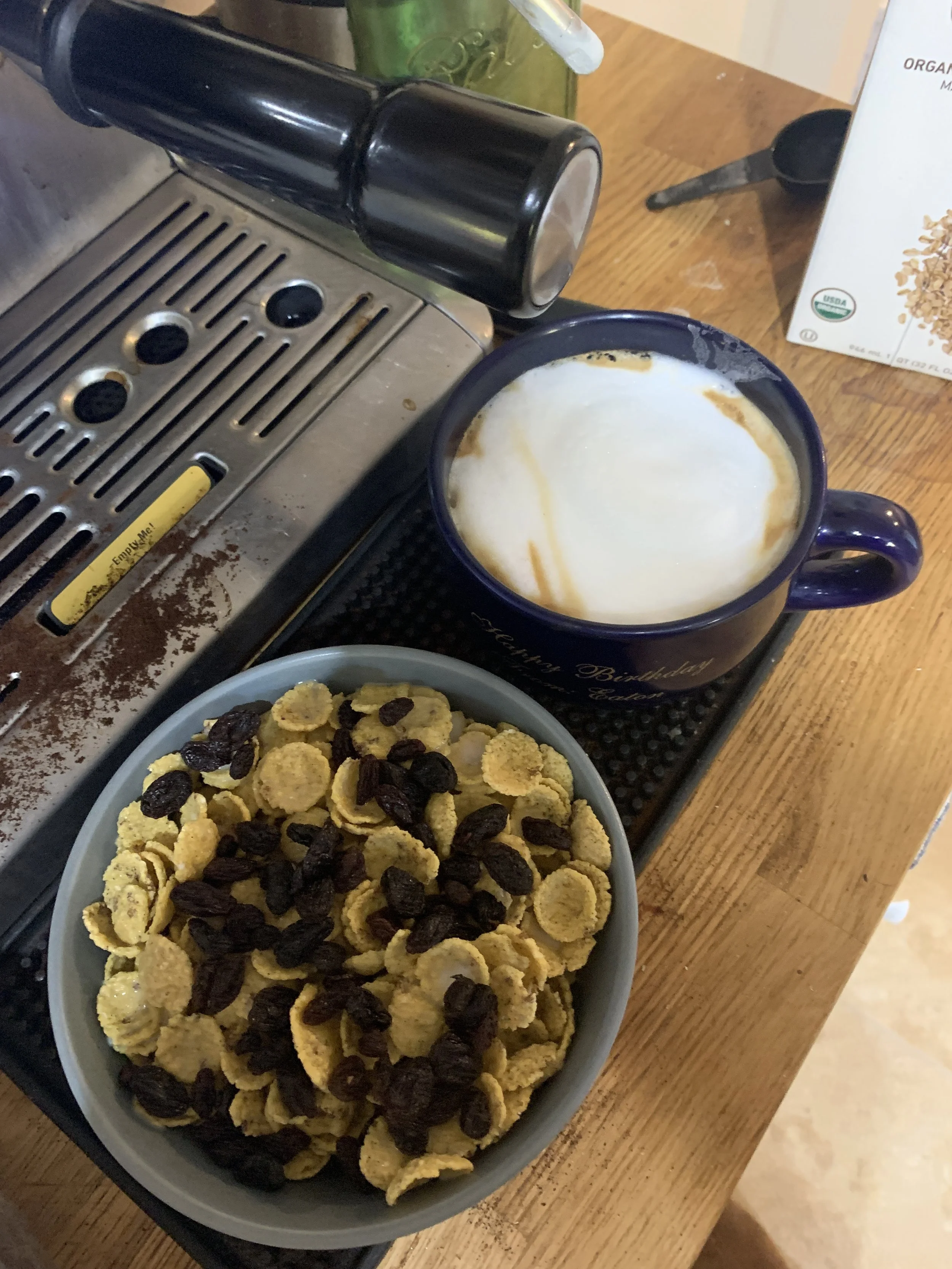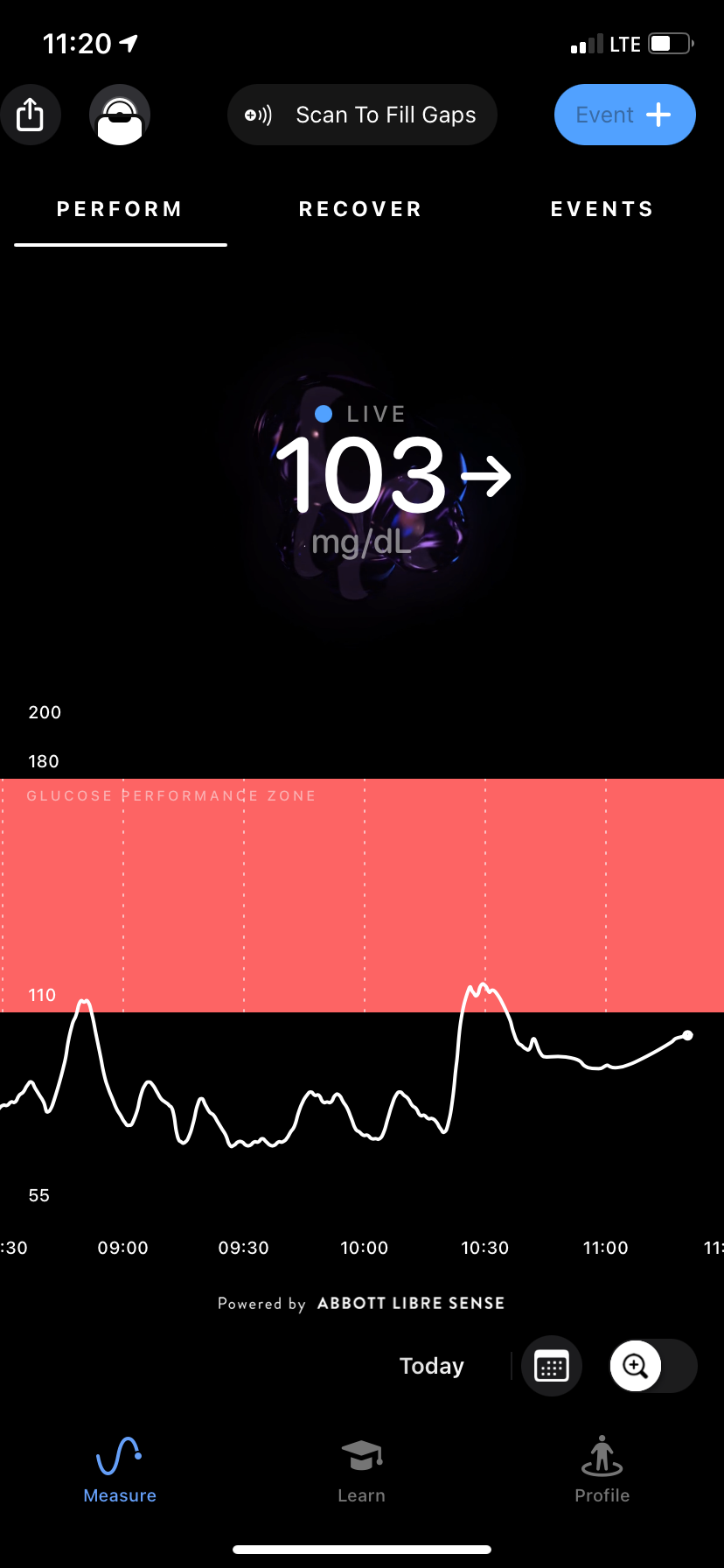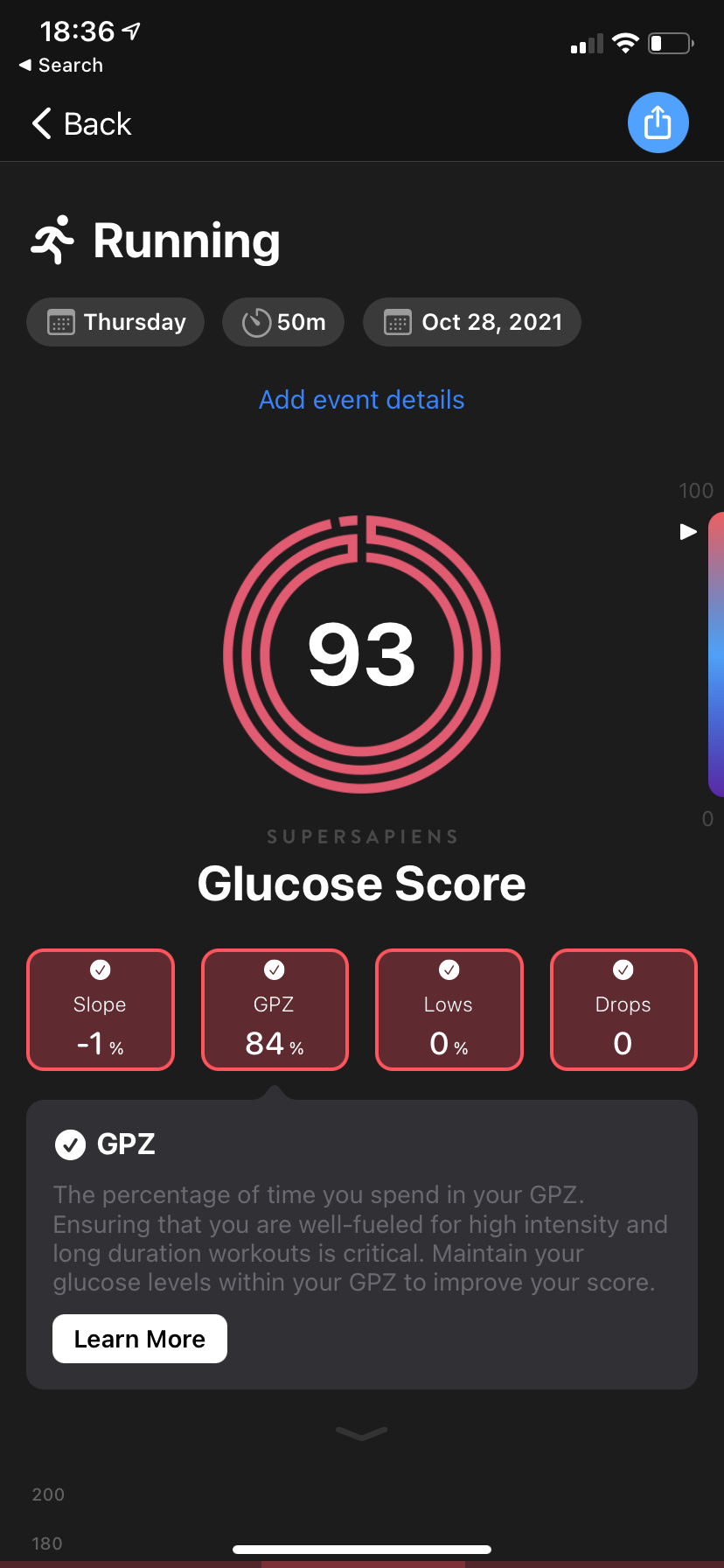What I’ve learned after 10 days with the Supersapiens CGM
The first 10 days with this tool have been nothing short of insightful and helpful; I’m not being paid to say that either! One of my athletes became a part of the trial and showed me the inner workings of the app and device. I decided to give it a try and connect with the team at Supersapiens. I’ve been a tester many times before from Beta testing new software to prototype shoes, and now wearable tech! I’m still learning all about this tool so what I learn through using it will only become more solidified.
Background: I’ve been on a plant based diet for roughly 15 years so the majority of my fat comes from butter, olive oil, and fat inside foods. My proteins are commonly eggs (I’m an ovo lacto vegetarian), legumes, and soy. My carbohydrates/ starches are rice, potato/sweet potato, GF Bread, fruits, and gluten free grains. I’ve been a Gluten Free Vegetarian for 10 of the last 15 years, and have had significantly less stomach issues in the last 5 by eliminating high fiber foods in the morning or until after I run for the day. I am currently in my base phase of training so all my workouts or lower zone 2 work 6-7 days/w eek with 1-2 days of strength and cross training each week. Starting in November, I will integrate workouts.
Preloading with a gel only. It got me up but not enough to keep me in the performance zone.
1. You are what you eat
It’s like my first garmin watch or using a tool like Trainingpeaks, the insight into what you’re creating root metrics, trends, and principals you begin to key in on. Taking notice of how I feel in a moment and then looking at my blood glucose help me understand and interpret my highs and lows. Since starting with Supersapiens, I can correlate my bad runs from my good runs based on feeling. It is not always a correlation of high glucose number = good feeling run.
A latte and cereal with dried fruit. Not balanced enough for long term fueling. I needed to add a greater protein and fat component for this to be successful at fueling my morning run / feeling full for the morning. I didn’t run until 3 hours later and I was starving.
2. Fueling is a rhythm
I tend to regulate glucose quite well - operating in the low 80’s throughout the day between meals means that I have pretty low sugar intake most days. When I want sustainable energy throughout the day, I have to take in good fats, carbs, and a high amount of protein to feel satiated and keyed up when I work. I also have to regularly snack if I have a run later in the day. I simply cannot have breakfast, fast for 6 hours, and perform. This sounds obvious writing it down but I would often lose sight of this daily. If I did fuel it was usually a small snack or fruit 60-90 minutes before hand, this would start me off moderately high and then tank me. Low blood glucose and running is really uncomfortable.
3. Inputs do not equal outputs
Understanding what foods skyrocket and crash my blood glucose has helped me start to build a structure of what foods are best in the morning before a run, fueling patterns leading into an afternoon run, and a structure of what I need to eat throughout the day. When I first started the trial, I thought I was always shooting for a plateau of 110-120 mg/dl when I was working out. With a working pancreas I have to design a plan that stitches together the idea of regular intake, moderate my carb intake, and plan for the delay of digestion. This last point is critical, if I have something in my stomach it’s a first in, first out system; so what’s ahead of those great carbs needs to be processed first.
Working pancreases self regulate. Times of high stress or acute focus can raise glucose levels. This is part of why stress can have a major impact on your runs later in the day after a hard day of work.
4. Utilizing different carbohydrate forms
Finding out what sends you skyrocketing and crashing often comes down to trial and error in the first few weeks. Cereal isn’t great for me as a stand alone but when you add in fresh or dried fruit that changes the”ramp” or rate of increase. If I have cereal alongside a source of fat or protein - things change dramatically. So eggs with a side of cereal and fresh fruit create a longer, slower ramp. Fueling for a race ro workout looks different than a regular run. I only feel that I’ve nailed it once in 10 days. I have tried eating nothing before a run and going out. I’ve tried preloading with a gel and going out. I’ve tried taking 2 chews before a run and then 1 chew every mile for a run. Each produced different results, none of them produced a high score and often gave me significant lows in my glucose. Don’t get me wrong - these runs all felt good but not, “wow, this is it!”. Each fueling strategy gave me insights of what works and what doesn’t; it’s not all error but initially it can feel like it.
5. Intention is everything
To fuel for a run properly you have to be intentional you can’t just look at your watch with a free hour and go out and run. Especially if you haven’t eaten in a couple hours, haven’t had much water, and simply think you’ll perform because you’re telling your body to do so. To perform optimally it means you’ve got good glucose stores, you’ve fueled well throughout the run, and you’re setting your body up for optimal recovery when you’re done (refilling your glycogen stores). What you will find is that directly after you eat you will move into the performance zone and then regulate back to a normal number (thanks pancreas!) This does not mean you missed your “optimal” window. I have found that I need to start to raise my blood glucose with something small as I am lacing up my shoes which so far look like 1 medjool date and a piece of gum, half a banana and a piece of gum, or 8-12 rice or almond crackers before heading out.
According to the app and how I felt during the workout; this is nearly ideal. Yes, there is a dip butI didn’t crash, I simply regulated and my fueling strategy took over. This was a 7 mile, zone 2 run.
6. To Maintain
As I mentioned earlier, I was under the impression that during exercise I should get my glucose number above 100mg/dL and then hold it steady. This is not the case, instead it’s more about keeping it in range. I found that I have to take in way more carbohydrate than I have before. Having a few successful runs and higher scores utilizing liquid carbohydrates ~ 50g of CHO/hr was quite an eye opener. So far all my efforts have been under 60 minutes but I’ve been able to feel consistently fueled and keyed in on my runs when I use this method. This helps me feel mentally keyed in despite feeling physically tired, this is a shift in my training after 15 years, this is new!
This is part of the reporting of the app. This is the highest score I achieved. Priming with a medjool date and gum 90 minutes after a full meal, fueling throughout with 1/2 a serving of Skratch Superfuel and 14oz of water = 50g of Carbs.
7. Have a strategy
I can’t stress enough that just heading out the door hoping what you ate earlier in the day will sustain you. My old strategy was often just - “eat well” and it will all work itself out in the wash. This is certainly not the case anymore for me. I now know that as I integrate workouts into my training, my fueling strategy will adjust and change. This is what I will have to nail down over the next month and what I will share next.
Takeaways:
After 10 days, I’ve learned that I have to fuel more and more often. In that time, I’ve lost a little weight despite eating more. My training load is increasing so don’t take that as correlative, just an insight.
Fueling during my daily runs and easy days is new. It plays a role in improved recovery along with more regular and well timed fueling.
Taking in 50G of carbohydrate in liquid form feels like a lot and will require me to train my stomach.
All carbs are not equal. Gels skyrocket me as a priming source, they treat me well after 45+ minutes of activity. Liquid carbs like Skratch Superfuel keep me VERY consistent throughout the run.
This is an ongoing process and will ultimately be an amazing tool as I prepare for my half in February.





